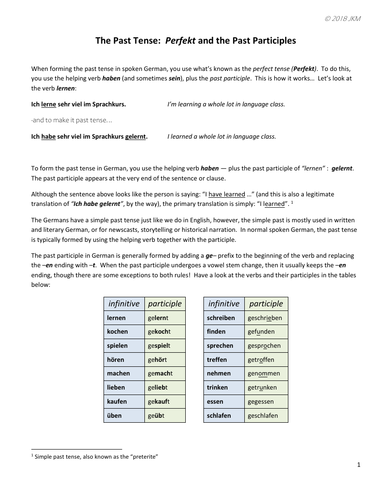

This is a brief 2-page handout introducing students to the very basics of the German ‘Perfekt’ tense. The ‘Perfekt’ is similar in appearance and structure to the English present perfect tense, however, the way in which it’s used is different.
The ‘Perfekt’ is widely used in colloquial German when referring to events in the past. It is formed by using a helping verb together with a past participle. Similar to English, participles can be either regular (“weak”) or irregular (“strong”). Examples of weak and strong participles are provided along with sample sentences in German.
Get this resource as part of a bundle and save up to 11%
A bundle is a package of resources grouped together to teach a particular topic, or a series of lessons, in one place.
Something went wrong, please try again later.
This resource hasn't been reviewed yet
To ensure quality for our reviews, only customers who have purchased this resource can review it
Report this resourceto let us know if it violates our terms and conditions.
Our customer service team will review your report and will be in touch.